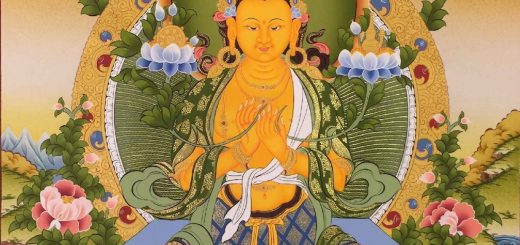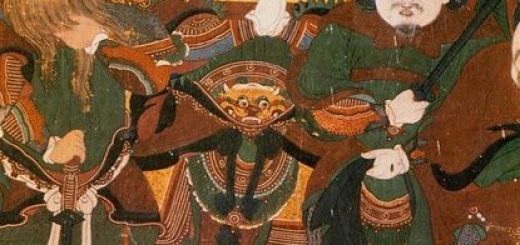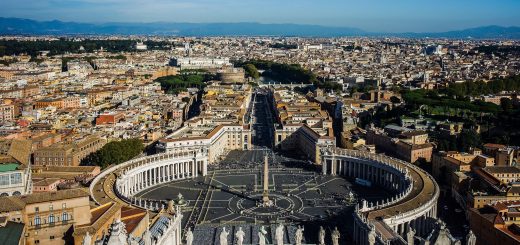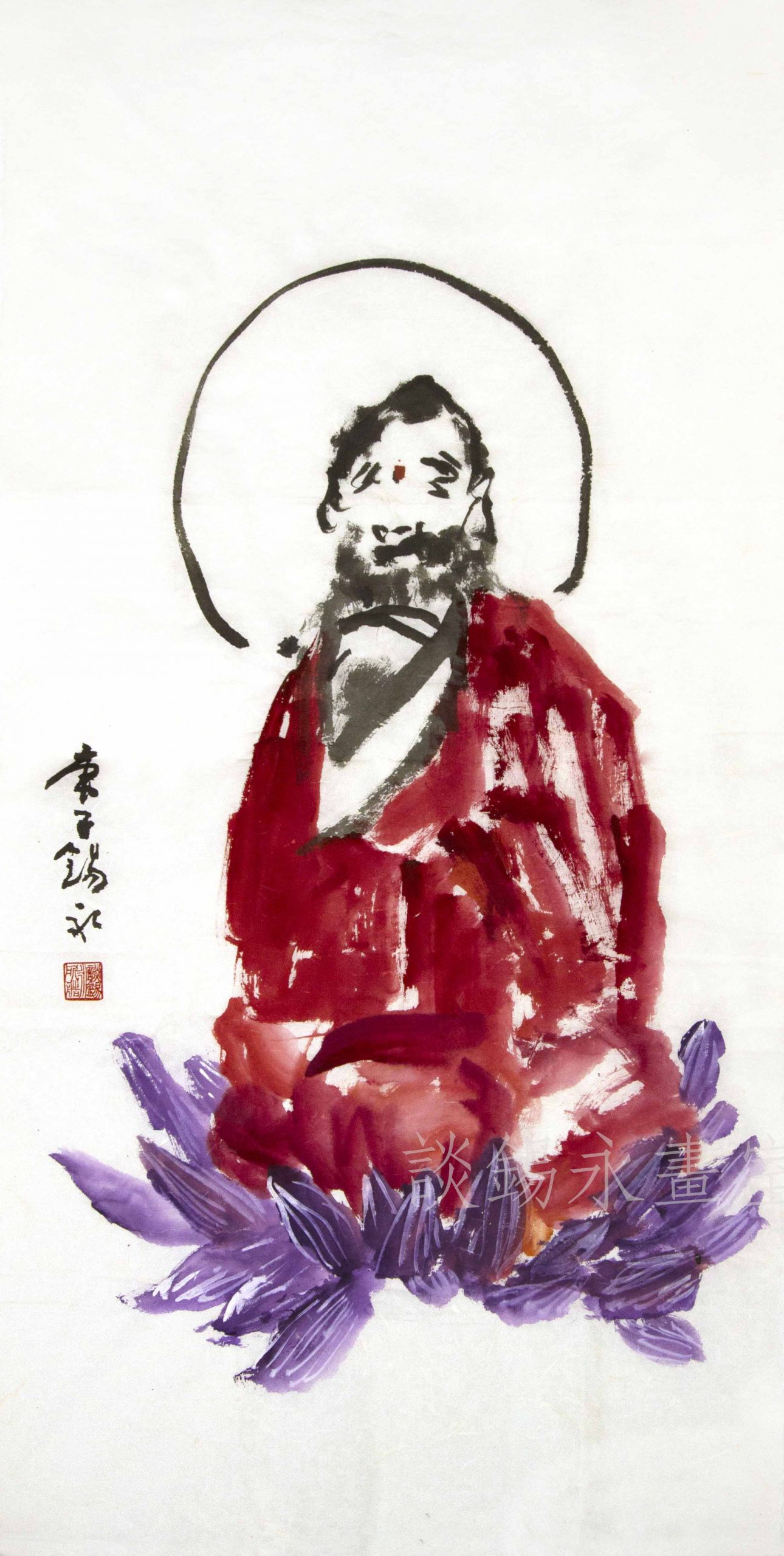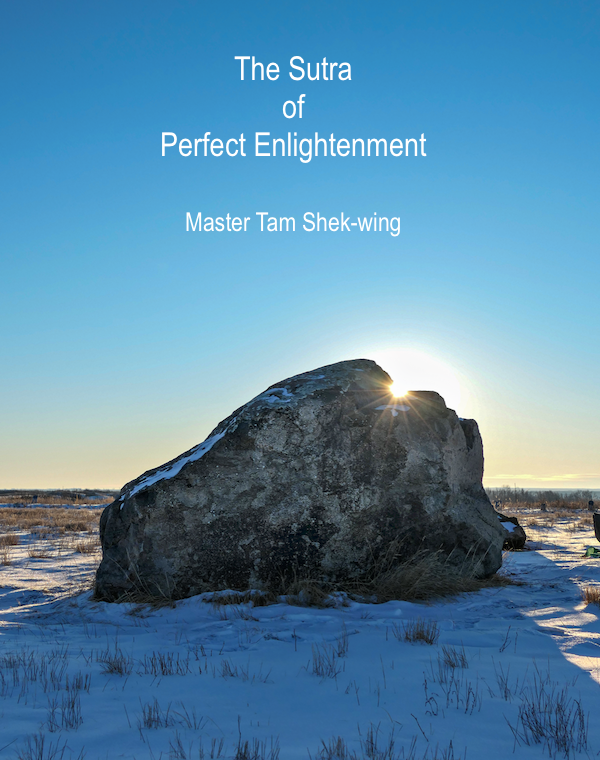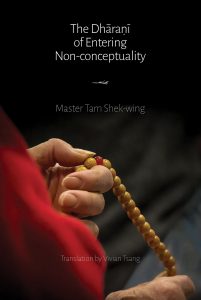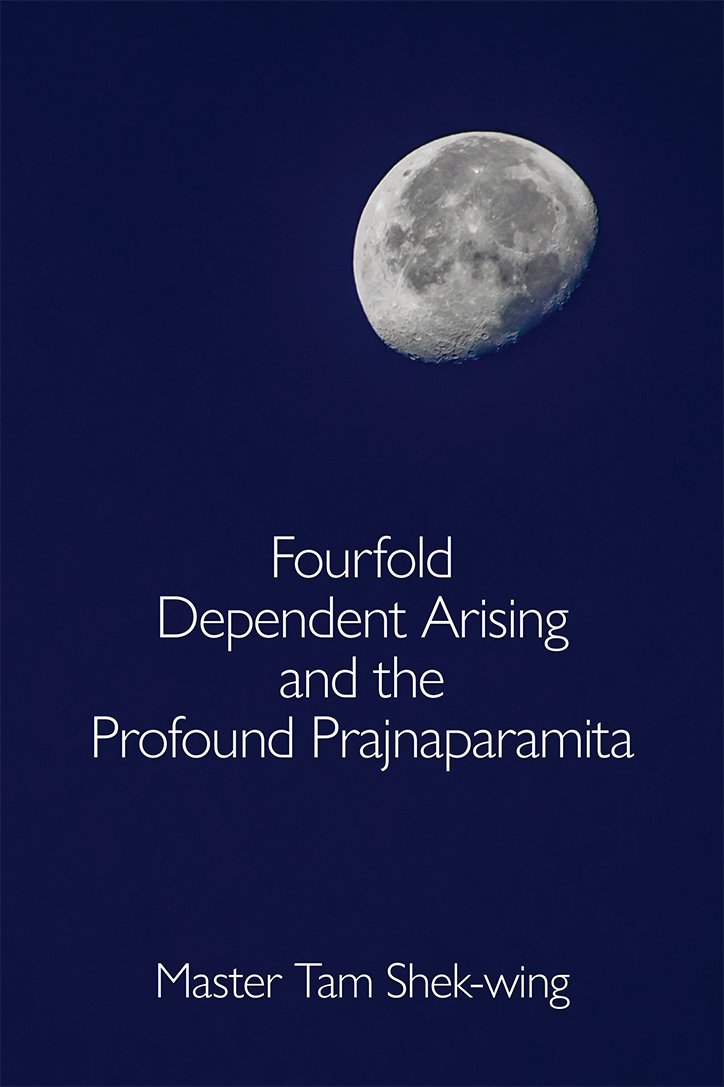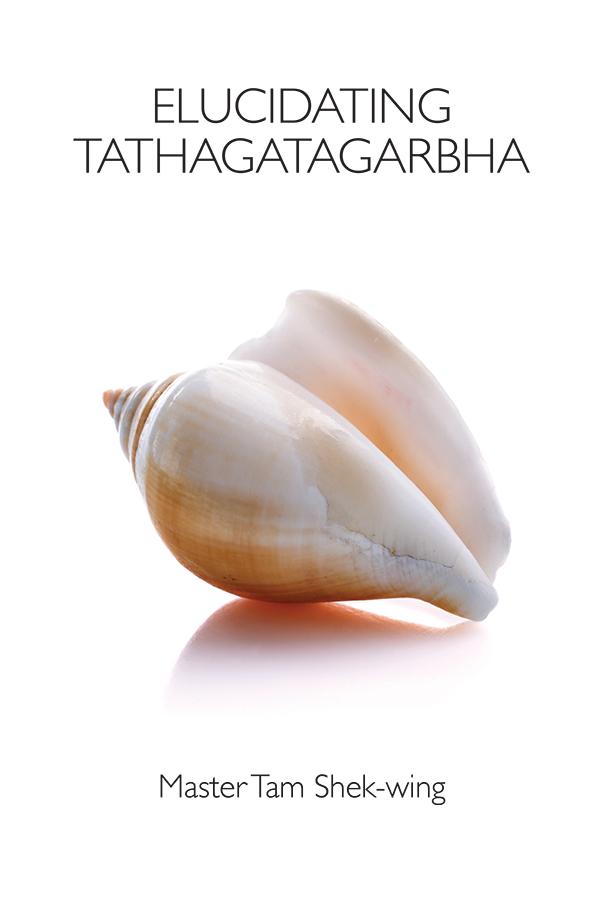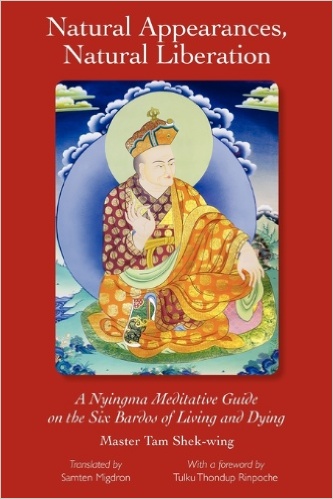Perfect Enlightenment 20: Buddha Teaches the Practice in Stages
Translator’s note: In this section, Buddha highlights the different positions “according with the nature of enlightenment” as a way to illustrate the practice in stages, where Buddha mentions the famous analogy of “finger pointing to the moon.” We take this opportunity to repost to Master Tam’s original introduction to the “Beyond Word” series, where the discussion makes a journey from dependent arising due to interdependence and relativity, to dependent arising due to mutual obstruction, and beyond.
In the previous columns (18, 19), bodhisattva Pure Wisdom asked if there were any differences in the realization by sentient beings, bodhisattvas, and buddhas, to which Buddha had proceeded with the first part of the answer. Below is the second part.
As usual, click here for the table of contents to revisit the dialogue between Buddha and previous bodhisattvas.
Show scripture (Chinese). 「善男子!一切眾生從無始來由妄想我及愛我者,曾不自知念念生滅,故起憎愛,耽著五欲;若遇善友教令開悟淨圓覺性發明起滅,即知此生性自勞慮。若復有人勞慮永斷得法界淨,即彼淨解為自障礙,故於圓覺而不自在。此名凡夫隨順覺性。 「善男子!一切菩薩,見解為礙,雖斷解礙,猶住見覺,覺礙為礙而不自在;此名菩薩未入地者隨順覺性。 「善男子!有照有覺俱名障礙,是故菩薩常覺不住,照與照者同時寂滅,譬如有人自斷其首,首已斷故無能斷者;則以礙心自滅諸礙,礙已斷滅無滅礙者。修多羅教如標月指,若復見月,了知所標畢竟非月;一切如來種種言說開示菩薩亦復如是。此名菩薩已入地者隨順覺性。 「善男子!一切障礙即究竟覺,得念、失念無非解脫,成法、破法皆名涅槃,智慧、愚癡通為般若,菩薩、外道所成就法同是菩提,無明、真如無異境界,諸戒、定、慧及婬、怒、癡俱是梵行,眾生、國土同一法性,地獄、天宮皆為淨土,有性、無性齊成佛道;一切煩惱畢竟解脫,法界海慧照了諸相猶如虛空。此名如來隨順覺性。 「善男子!但諸菩薩及末世眾生,居一切時不起妄念,於諸妄心亦不息滅,住妄想境不加了知,於無了知不辨真實。彼諸眾生聞是法門,信解受持不生驚畏。是則名為隨順覺性。善男子!汝等當知!如是眾生已曾供養百千萬億恒河沙諸佛及大菩薩,植眾德本;佛說是人名為成就一切種智。」 Show scripture (English). “Good sons, all sentient beings have, because of a deludedly conceived self and attachment to that self, beginninglessly never known moment-to-moment arising and cessation for themselves; therefore they arise likes and dislikes, and become addicted to the objects in the five sense fields. If they meet a Genuine Teacher, he will awaken them to the essence of pure Perfect Enlightenment. Discovering arising and cessation, they will directly know that this mind’s very nature is that of anxiety. There may be a person who permanently severs that anxiety and experiences the purity of the realm of reality, but who allows his understanding of purity in turn to become a hindrance. This person is tending towards Perfect Enlightenment but is not perfectly free. He is called a worldling who is according with the nature of enlightenment.” “Good sons, all bodhisattvas see their understanding as an obstruction. But even if they eliminate the understanding-obstruction they still abide in a view of enlightenment. This enlightenment-obstruction becomes a hindrance and they are not perfectly free. They are called bodhisattvas who have not yet entered the bodhisattva grounds who are according with the nature of enlightenment.” “Good sons, since illumination and enlightenment are also hindrance and obstruction, the bodhisattva is always enlightened without abiding. Illumination and illuminator simultaneously vanish. It is like the case of a person who cuts off his own head—when the head is cut off, there is no longer any ‘cutter.’ Hence the use of the obstructing mind to eliminate all obstructions: when obstructions have been eliminated, there is no one to eliminate obstructions. These are called bodhisattvas who have entered the bodhisattva grounds who are according with the nature of enlightenment.” “Good sons, all hindrances are none other than ultimate enlightenment. Whether you attain mindfulness or lose mindfulness, they are none other than liberation. Establishing the Dharma and refuting the Dharma are both called nirvana; wisdom and folly are equally prajñā; the method that is perfected by bodhisattvas and false teachers is the same bodhi; ignorance and suchness are not different realms; morality, concentration and wisdom, as well as desire, hatred and ignorance are all divine practices; sentient beings and lands share the same dharma nature; hell and heaven are both the Pure Land; those having Buddha-nature and those not having it equally accomplish the Buddha’s enlightenment. All defilements are ultimately liberation. The dharmadhātu’s ocean-like wisdom completely illuminates all marks to be just like the vast expanse. This is called the Tathāgata’s accordance with the nature of enlightenment.” “Good sons, if all bodhisattvas and sentient beings of the degenerate age would merely do this: at all times, not arise false thoughts; in false states of mind, not strive for cessation; when abiding in false objects, not try to impose a complete understanding; while lacking complete understanding, not try to analyze true reality. If these sentient beings, hearing this teaching, believe, understand, assimilate and remember it without being shocked or frightened by it, they are said to be according with the nature of enlightenment.” “Good sons, you should all be aware that these sentient beings have already made offerings to myriads of Buddhas a quintillion times as numerous as the grains of sand in the Ganges river, and have cultivated their roots of virtue with as many great bodhisattvas. I call these people fully developed in omniscience.” Buddha answered the question on the stages of practice, for which there are four. A worldling who is according to the nature of enlightenment... click to show more. First, sentient beings who is according with the nature of enlightenment. Since beginningless time, because of a deludedly conceived self and attachment to that self, there arises likes and dislikes, and the five desires. From learning the correct view, one awakens to no longer take the arising and cessation of deluded thoughts as the self, knowing that they are only the anxiety of the mind. If the burden of anxiety can be severed, one attains the purity of dharmadhātu (得法界淨), which is also what the Nyingma tradition calls “rest in the nature of mind” (心性休息). But if one deems this the ultimate, then this understanding of purity would naturally become an obstacle, for one has become trapped within the realm of “rest in the nature of mind,” where mind has yet entered perfect enlightenment. The scripture therefore says, one is “tending towards perfect enlightenment but is not perfectly free.” Such a person Buddha called, “a worldling who is according to the nature of enlightenment.” Bodhisattvas who have not yet entered the bodhisattva grounds... Second, bodhisattvas who have yet entered bodhisattva grounds but are “according with the nature of enlightenment.” Proceeding from before, understanding that one’s attainment is also an obstacle, one continues the practice to resolve it. However, while one can transcend the obstacle from one’s understanding, there still remains a perspective on enlightenment. A view of enlightenment is simply an observational wisdom a bodhisattva of each ground abides by. This observational wisdom at each bodhisattva ground can also become an obstruction for the practitioner, and hence, “this enlightenment-obstruction becomes a hindrance and they are not perfectly free.” They are what Buddha called “bodhisattvas who have not yet entered the bodhisattva grounds who are according with the nature of enlightenment.” Bodhisattvas on the seventh ground and prior are all in this position. In the Nyingma tradition, while there is a natural liberation from the nature of mind, and one is simultaneously limited by the nature of phenomena. Bodhisattvas who have entered the bodhisattva grounds... Third, bodhisattvas who have entered bodhisattva grounds who are according with the nature of enlightenment. “Illumination and enlightenment are also hinderance and obstruction.” Illumination refers to wisdom observation, it is an observation via the self-realized wisdom of all phenomena. (This is the same illumination in the line “illuminating all five aggregates as entirely insubstantial” in the Heart Sūtra.) Enlightenment is the state-of-mind resulting in this illumination. The two are both necessary to a practitioner, for illumination forms the path, enlightenment is the result. A practitioner conducts themselves in the practice, the practice must come to a fruition, one cannot depart from the two, and yet they also form obstacles on each ground, for one who forever abides in the illumination and enlightenment of a ground will never surpass it. To eliminate the obstacle from the illumination and enlightenment, the bodhisattva must transcend the two. The scripture therefore says, “The bodhisattva is always enlightened without abiding. Illumination and illuminator simultaneously vanish.” This deserves an explanation. The scripture explains with an analogy. It says, “It is like the case of a person who cuts off his own head—when the head is cut off, there is no longer any cutter.” The analogy says there is no longer the subject and object of the cutting. The head is the object, the person is the subject. But when the head is cut off, the person is no longer, then at the cutting of the object, the subject of the cutting also ceases. Since there is neither the subject nor the object, there is not the wisdom that can cut, nor the obstacle to be cut. The scripture therefore says, “Hence the use of the obstructing mind to eliminate all obstructions: when obstructions have been eliminated, there is no one to eliminate obstructions.” This is the realm of a bodhisattva who is always enlightened but never abiding, because “illumination and illuminator simultaneously vanish.” According to the Nyingma tradition, this is the natural liberation from the nature of phenomena, simultaneously an abiding in the nature of equality. The teaching of practicing perfect enlightenment is like a finger pointing at the moon. If one considers seeing the finger as sufficient, it is akin to abiding in the sayings of perfect enlightenment, such that enlightenment has yet to be realized. If one sees the moon and not the finger, then one is no longer only concerned with the sayings, but also giving justice to the teaching of perfect enlightenment. For those who still only see the finger and not yet the moon, Buddha calls them “bodhisattvas who have entered the bodhisattva grounds who are according with the nature of enlightenment.” This includes bodhisattvas on the tenth ground, whether one has entered the ground of purity or not. The final position... The last one is at the ultimate position, the tathāgatas who are according with the nature of enlightenment. Bodhisattvas who abide in the nature of equality, at the ultimate realization of perfect enlightenment, realize the natural liberation from the nature of equality. Even in the nature of equality one does not dwell. The scripture describes this realm with ten pairs of dharma, summarized as “all hindrances are none other than ultimate enlightenment.” The ten pairs are: On the ten pairs... If one considers the ten pairs as illustrations of equality, this view is not yet ultimate, for the ultimate perfect enlightenment, there is no longer dharma of relativity to be established. What ordinary people consider as relative phenomena, they are in actuality of one taste. To speak of one taste, equality has already transcended. (To speak of equality, there exists still duality; equality must be surpassed to become one taste.) This is then the natural liberation from the nature of equality. Those on the path of practicing perfect enlightenment have yet become free from the nature of equality, one is still trapped by equality, knowing equality but not oneness. In the ten pairs, the former is the obstruction, the latter is the ultimate awakening. If seen as obstruction, it is because one still believes there exists obstruction to be eliminated. If there exists an obstacle to be eliminated, then there must also exist the person and the method to eliminate the obstacle. Since there is the method of elimination and the person who eliminates, there exists the ego self and the phenomenal self. Even if one speaks of the equality of beings and phenomena, this equality is none other than the equality of ego selves, and the equality of phenomenal selves, which cannot be called perfect enlightenment. Now in terms of the natural liberation of equality, all obstructions are not only equal to perfect enlightenment, they are both the natural spontaneous dependent arising of dharmakaya. Therefore the two are oneness. This is analogous to the mirror images and the mirror are oneness; the moon on water and water are oneness; the images on the television and the television are oneness. The awareness of oneness is then perfect enlightenment. Awareness of Oneness... And exactly because of the awareness of oneness, one can now speak of “the dharmadhātu’s ocean-like wisdom completely illuminates all marks to be just like the vast expanse.” The realm of awareness is said to be “the dharmadhātu’s ocean-like wisdom” to mean that wisdom is ocean-like pervading the entire dharmadhātu. This wisdom illuminates all appearances, seeing that they are oneness, like the vast expanse. Whenever Buddhists refer to the sky or the vast expanse, it refers to dharmakaya. Buddha had emphasized that one can use the vast expanse as the analogy for dharmakaya, for all appearances are dharmakaya. In the world of sentient beings and objects, a blade of grass, a tree, a speck of dust, a droplet of water, they are none other than dharmakaya. Dharmakaya and all phenomena are oneness, all appearances are oneness, this is then perfect enlightenment. At this position, Buddha called it “the Tathāgata’s accordance with the nature of enlightenment.” If the Tathāgata’s accordance with the nature of enlightenment is awakened, while the deluded thoughts are no longer aroused, the deluded mind does not cease; while abiding in the realm of illusion, one does not compound on this realm with understanding; while one is without understanding, it is not a distinction of truth or untruth. If one accepts and has faith in this realm, and is not in terror of it, one is then said to be in accordance with the nature of enlightenment, this way is the way to the accomplishment of omniscience. The above describes the four positions of accordances with wisdom. The differences in the accordance give rise to the four positions. This concludes the answer to Pure Wisdom. Show scripture (Chinese), concluding verse 爾時,世尊欲重宣此義而說偈言: 清淨慧當知, 圓滿菩提性, Show scripture (English). Then the World Honored One, wanting to restate the gist of this, composed a verse. He said: Pure Wisdom, you should know Concluding commentary on non-conceptuality of buddhas, bodhisattvas, and sentient beings. In the nature of perfect enlightenment, there are no buddhas, no bodisattvas, no sentient beings; there are no practices and no realizations; this way one cannot no longer speak of differences. If one has to talk about differences, then it is only the difference between enlightenment and before enlightenment. From ordinary beings to becoming buddhas, there are four stages of difference, but they are all according with the nature of enlightenment. The great perfection of enlightenment is called “pervasively according,” non-abiding any phenomena (one does not fall into words and concepts, and various distinctions of dharma). At each stage there is a corresponding wisdom in accordance, the awareness wisdom for this stage of practitioners. In accordance with the verse, one enters oneness.Chinese:
English:
Commentary:
Chinese:
無取亦無證, 無菩薩眾生。
覺與未覺時, 漸次有差別,
眾生為解礙, 菩薩未離覺。
入地永寂滅, 不住一切相,
大覺悉圓滿, 名為遍隨順。
末世諸眾生, 心不生虛妄,
佛說如是人, 現世即菩薩。
供養恒沙佛, 功德已圓滿,
雖有多方便, 皆名隨順智。English:
The nature of perfect bodhi
Has no acquisition, no actualization
Neither bodhisattva nor sentient being.
Yet between the times of enlightenment and non-enlightenment
There are differences in level.
Sentient beings are obstructed by their understanding;
Bodhisattvas are not free from enlightenment.
Entering the bodhisattva stages they are forever tranquil
And do not abide in any mark.
Great enlightenment fully includes everything
And is called pervasively according.
Sentient beings of the degenerate age
Whose minds do not arise falsity
I call
Appearing in the world as bodhisattvas.
They have made offerings to countless buddhas
And are already replete with virtuous merit.
Even though there are many expedient teaching methods
As a sum, they are called the wisdom that reaches everything.Commentary:
